18 Best Places to visit in Japan – Tourist Attractions in Japan
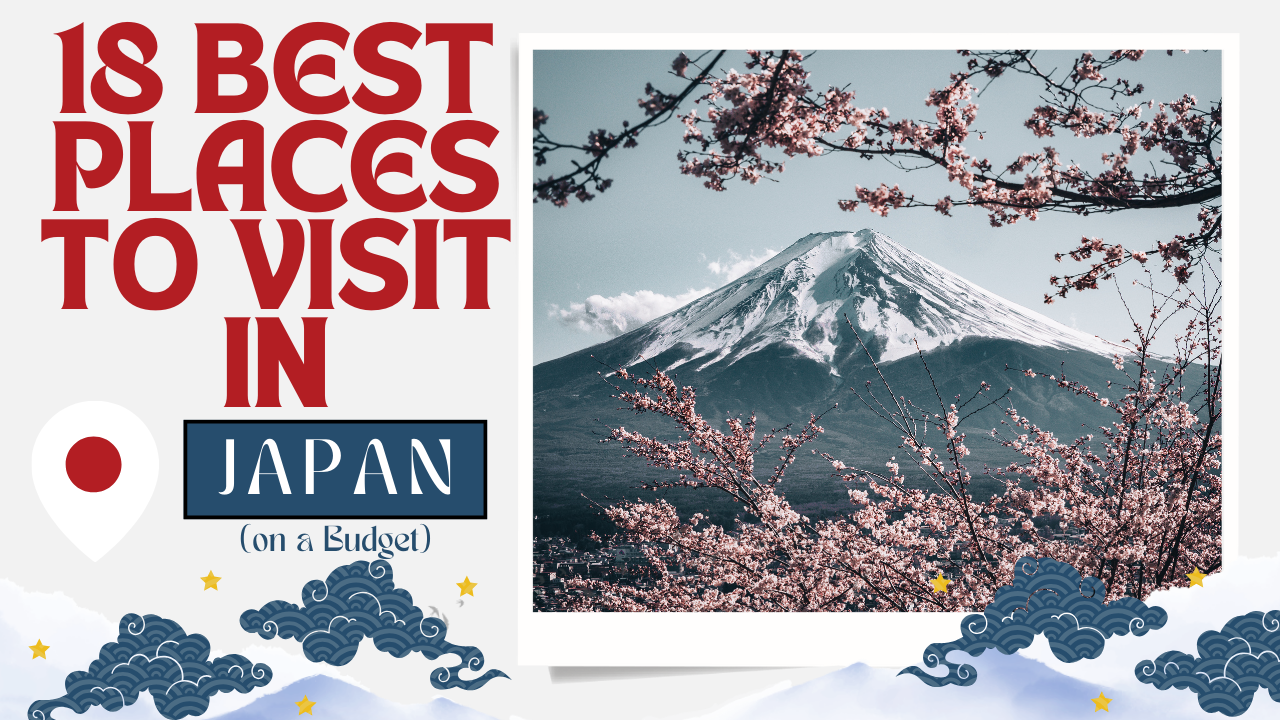
Japan, a land where ancient traditions seamlessly coexist with cutting-edge technology, offers an unparalleled tapestry of experiences for every traveler. Japan has a lot to offer, whether you’re a die-hard history buff, a nature lover or someone looking to experience the pulse of modern city life. This is a list of some fascinating activities to enjoy while visiting the Land of the Rising Sun.
Every step you take in Japan reveals a new side to its incredible landscape and rich cultural legacy. Japan offers a unique experience that combines tradition and innovation, whether you’re drawn to the calm of old temples or the colorful chaos of modern cities.
So, Here we have the Top 18 Best Places to visit in Japan :-
Table of Contents
1. Kyoto, the cultural heart of Japan
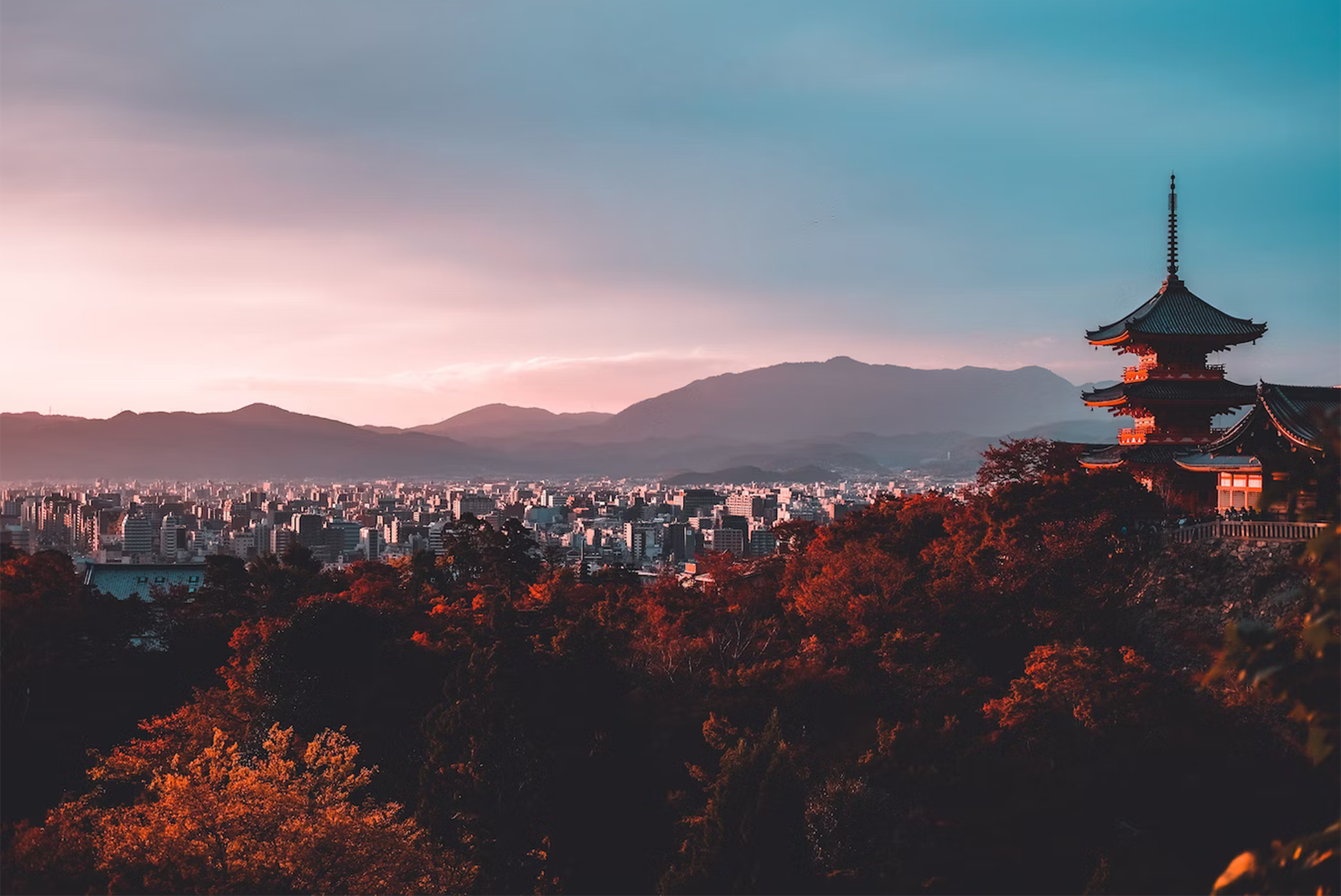
Explore the Gion neighborhood, where the sounds of long-gone customs can still be heard. Gion, the traditional center of Kyoto and the home of the geisha, is well-known for its well-preserved wooden machiya houses. Take a stroll down Hanamikoji Street after dark to see these elegant entertainers en route to impress their audience.
Kyoto visits would not be complete without seeing the famous Fushimi Inari Taisha. Climb the red torii gates that lead to the holy Mount Inari, home to panoramic views of Kyoto, stone foxes and secret shrines. The voyage involves both a spiritual exploration and a physical ascent.
Kinkaku-ji, the Golden Pavilion, is evidence of Kyoto’s magnificent architectural design. The pavilion, which is covered in gold leaf, reflects in the surrounding pond’s glittering waters. This shining representation of peace is set against a serene backdrop of well-kept gardens.
Explore the mystical Arashiyama Bamboo Grove, a natural church made of towering bamboo shoots. A charming atmosphere is created by the gentle rustle of the leaves and the filtered sunlight. Don’t miss the nearby free-roaming monkeys at Iwatayama Monkey Park.
Kiyomizu-dera, set on wooden platforms, provides sweeping views of Kyoto from its terrace. The temple is especially beautiful in the fall and during the cherry blossom season, when the city below turns into a vibrant canvas of nature’s colors.
A prime example of Edo-period elegance is Nijo Castle, a UNESCO World Heritage Site. Discover the “nightingale floors” that, in an effort to warn occupants of possible intruders, chirp softly with every step. A peaceful haven is the castle’s surrounding gardens.
Encircled by lush greenery and towering walls, the Kyoto Imperial Palace serves as a testament to Japan’s past as an imperial power. Visitors can explore the immaculate grounds and enter the regal halls with guided tours.
2. Kanazawa's Kenrokuen Garden
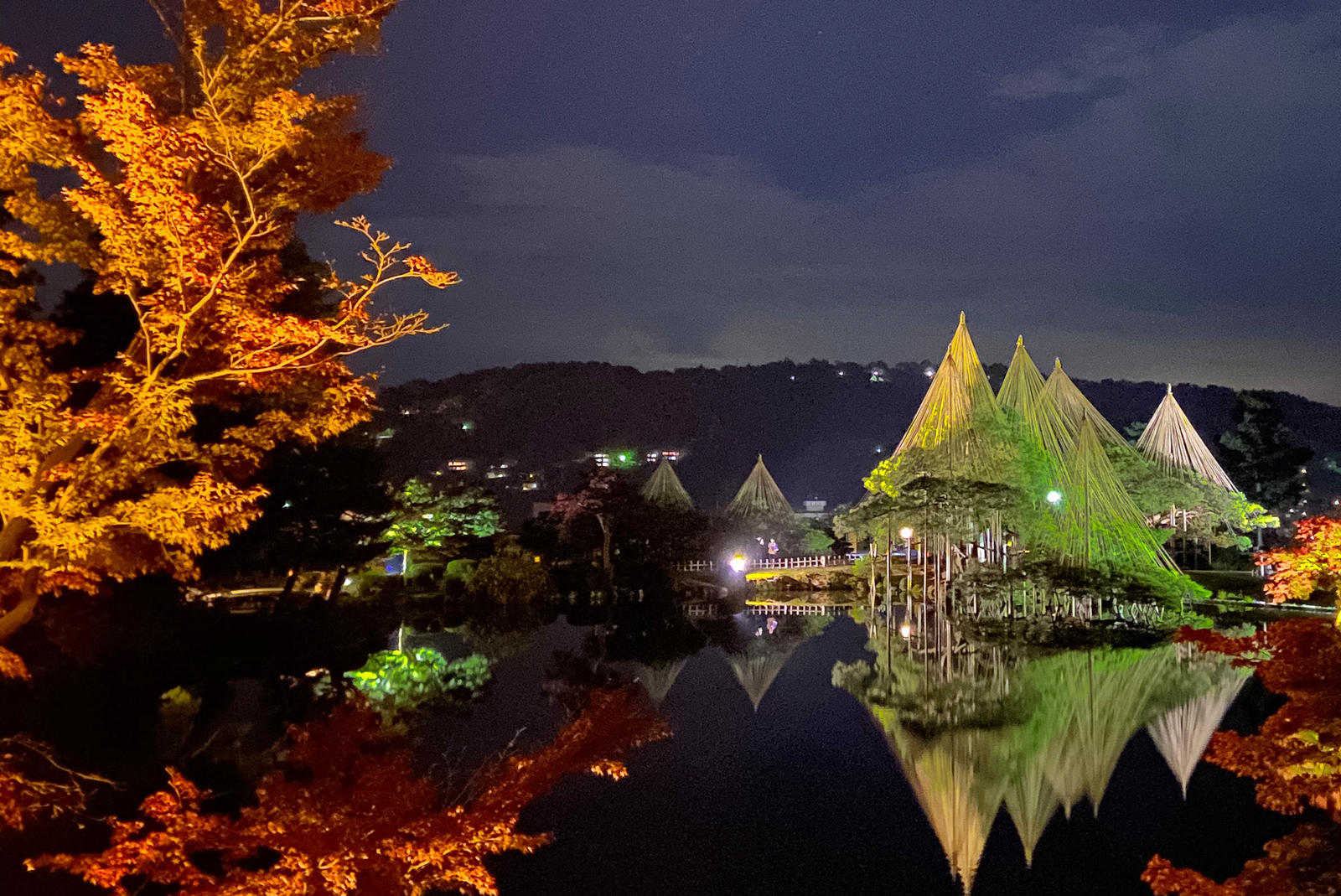
Kenrokuen is a dynamic work of art that changes with every season. Cherry blossoms tint the garden pink in the spring and the foliage turns fiery red and gold in the fall. A peaceful scene is revealed in the winter with small snowflakes decorating the well-trimmed trees.
Beginning Kenrokuen, a maze of meandering paths leads you past serene ponds, uphill alongside carefully manicured hills and through clusters of cherry trees. The name “Kenrokuen,” which means “Garden of the Six Sublimities,” alludes to the garden’s expansiveness, privacy, artificiality, age, copious amounts of water and expansive vistas.
The Two-legged Lantern and the Kotoji Toro Lantern, two iconic images of Kenrokuen, stand as silent witnesses to the garden’s lengthy past. The Kotoji Toro gracefully reflects in the nearby Kasumiga-ike Pond, giving it a distinctive “koto” (Japanese harp) shape.
The crystal-clear waters of Kasumiga-ike Pond, in the center of Kenrokuen, reflect the beauty of the surroundings. This reflective oasis’ poetic atmosphere is enhanced by ornamental bridges such as the stone Engetsukyo and the delicately curved Yuishinzan.
The Kaisugi Plum Tree, located at the southernmost point of the garden represents perseverance. The tree, which embodies the spirit of perseverance and renewal has flourished and is still blooming despite losing its branches due to heavy snowfall.
Traditional Japanese architecture is seamlessly incorporated into Kenrokuen, where teahouses such as Yugao-tei provide a calm haven. Accept the tea ceremony customs while taking in the sights and sounds of nature.
Consider in the expand “yuki-tsuri“—a technique for using ropes to support tree branches when there is a lot of snowfall. This typical procedure enhances the winter landscape’s sculpture appeal while simultaneously safeguarding the trees.
3. Nara, Japan's first permanent capital
Deer's Park
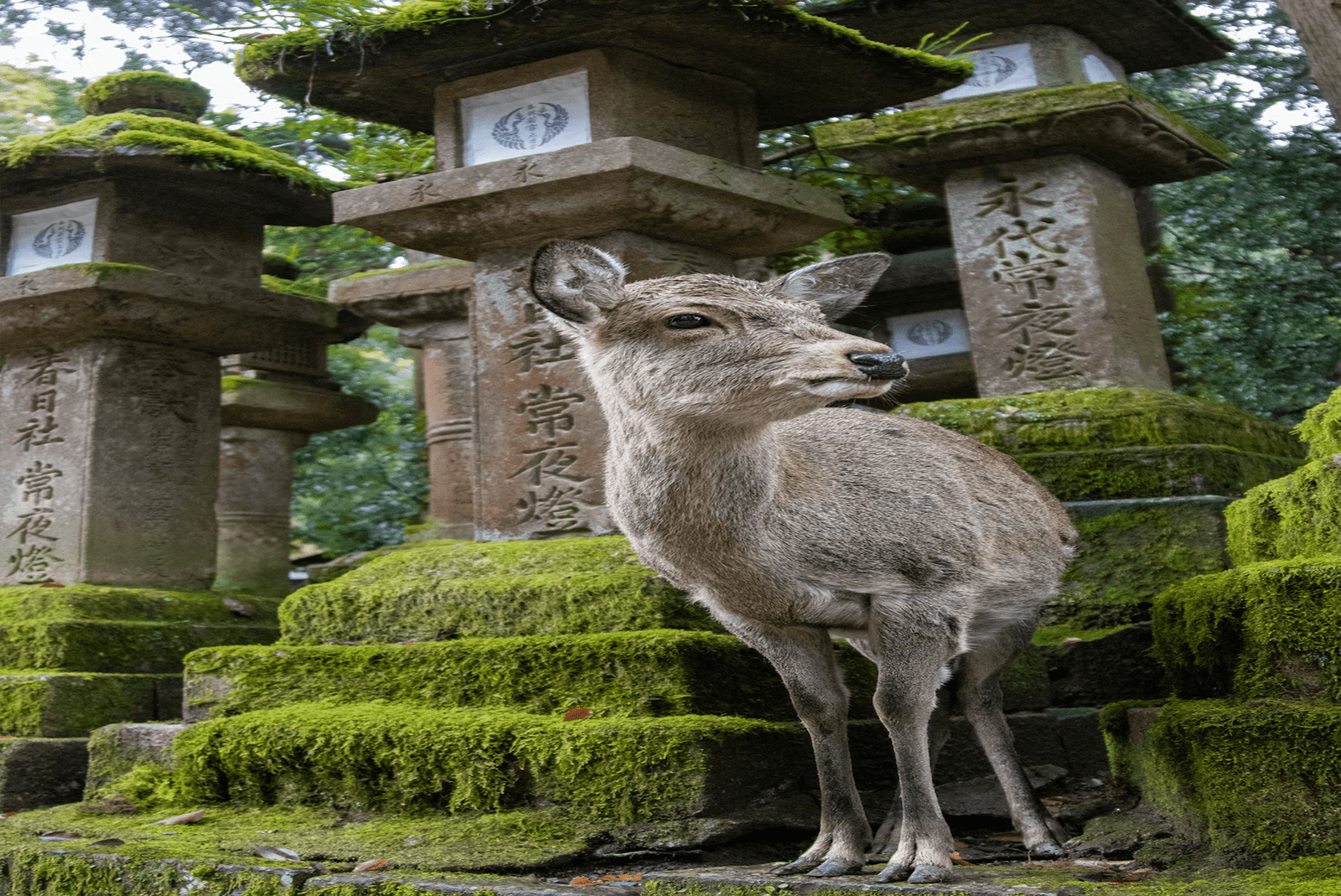
In Shinto belief, these amiable animals are messengers of the gods and roam freely. They frequently bow to guests in expectation of being offered deer crackers or “shika senbei,” for sale.
Todai-ji Temple

The Great Buddha or Daibutsu, is housed in the massive wooden temple Todai-ji, which dominates the skyline. This eighteenth-century bronze statue is astounding in both its sheer size and its fine details. As you enter Daibutsuden Hall, marvel at the guardians on either side.
Nara National Museum

Explore the Nara National Museum and immerse yourself in the artistic legacy of Nara. The centuries-old collection includes Buddhist paintings, sculptures and cultural items that shed light on the long and illustrious history of the city.
Kofuku-ji Temple
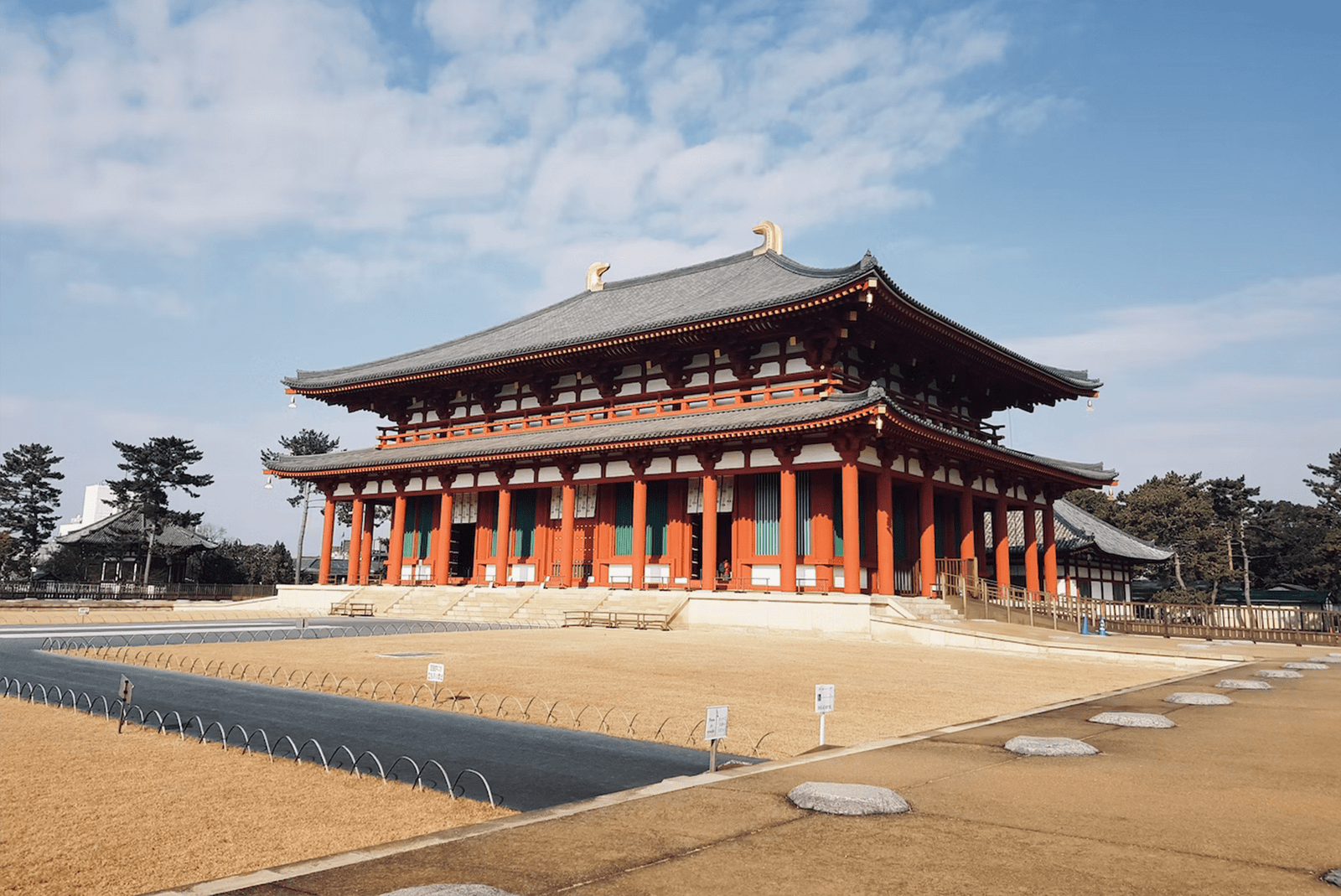
Kofuku-ji is another gem in Nara’s crown with its recognizable five-story pagoda. Discover the Eastern Golden Hall and the stunning, seasonally-changing gardens within the temple complex.
Isuien Garden

Experience peace in Isuien Garden, a masterwork that skillfully combines architectural features and landscapes. Explore among the verdant surroundings, navigate the stone bridges and take in the skillfully created scenes that arouse feelings of peace.
Horyu-ji Temple
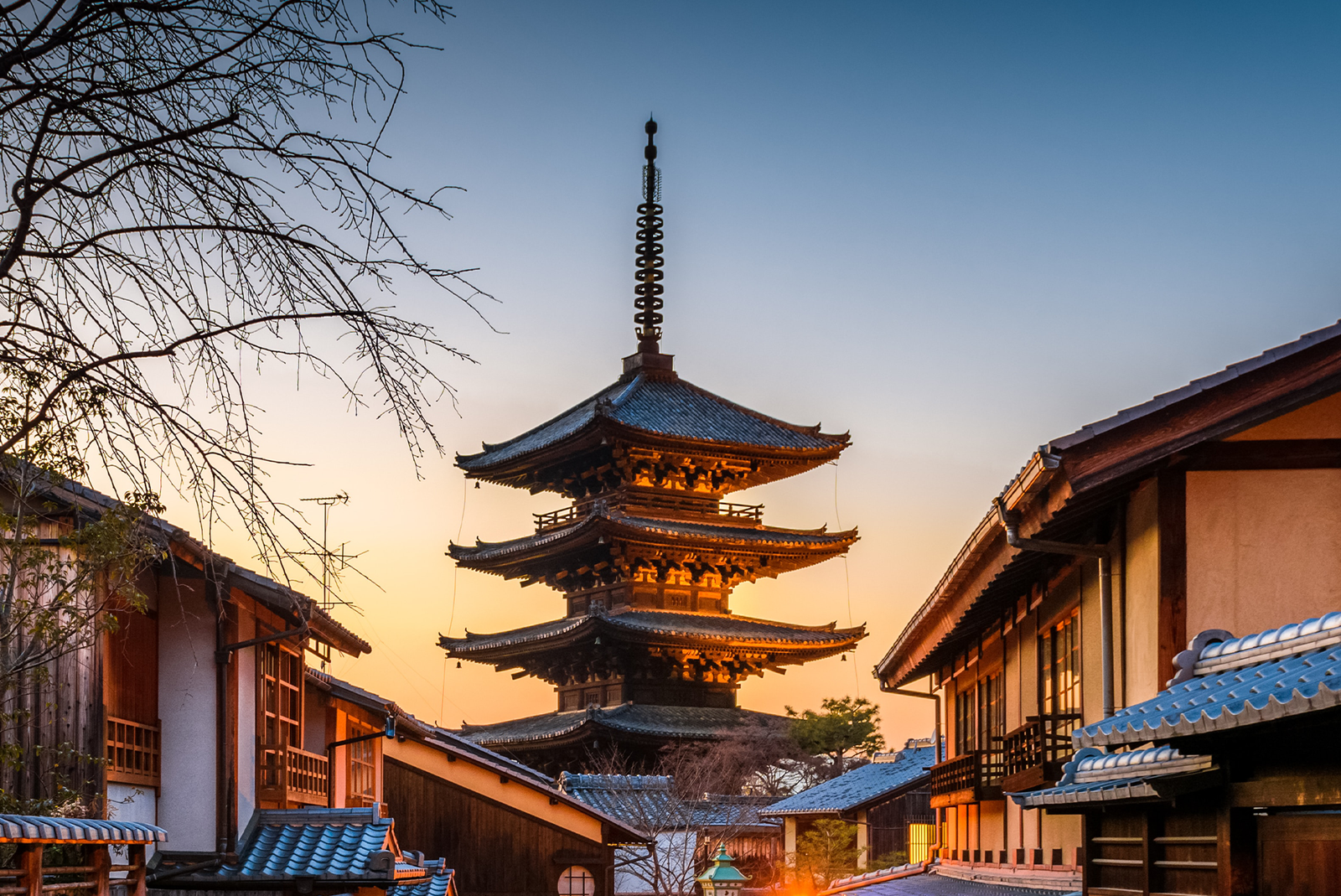
Situated in Ikaruga a short distance from Nara, Horyu-ji Temple is a World Heritage Site recognized by UNESCO that is well worth a visit. It is home to the oldest wooden buildings still standing in the world, such as Kondo Hall and the famous five-story pagoda.
4. Witnessing Cherry Blossom Season(Hanami)
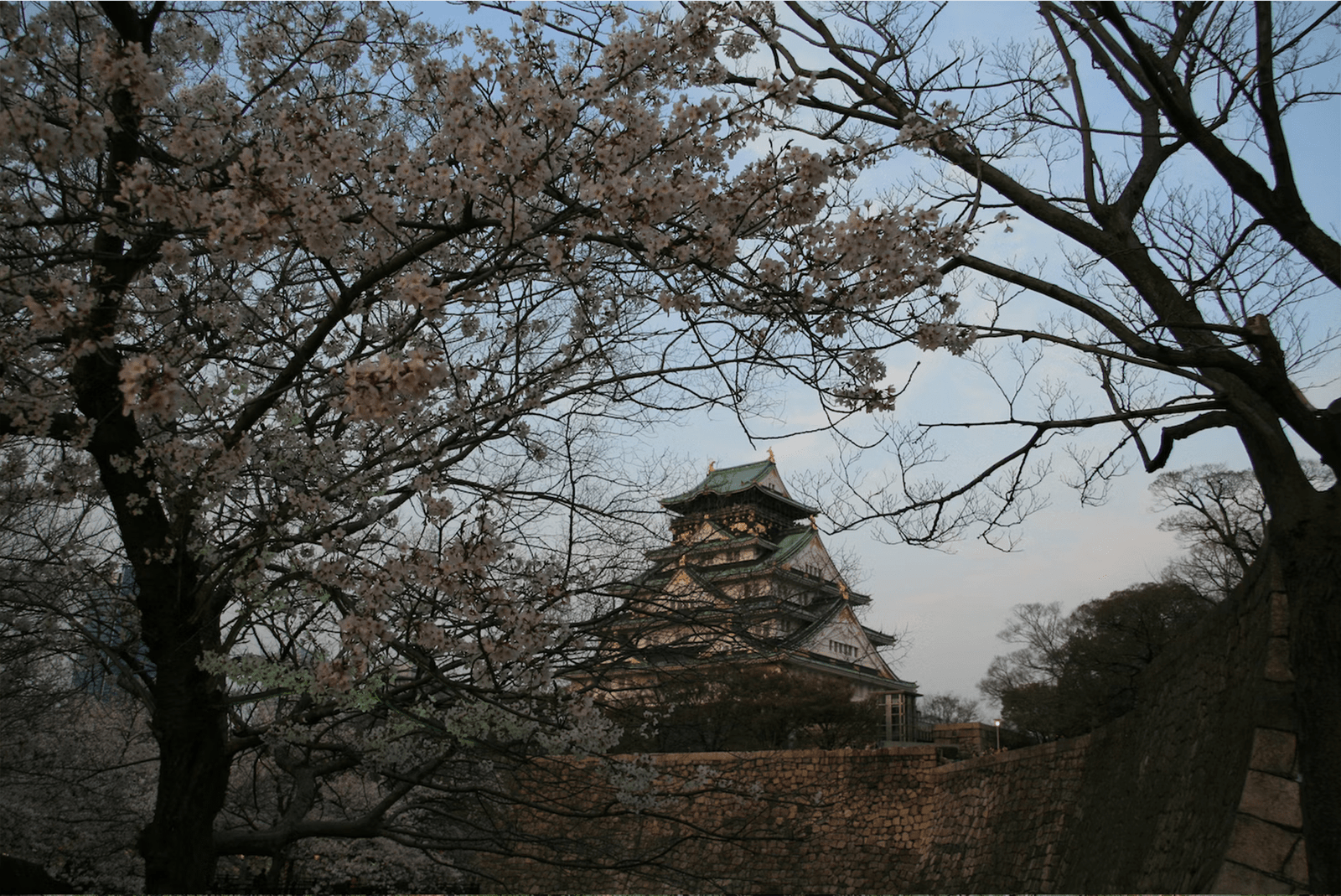
Hanami, the centuries-old tradition of cherry blossom viewing in Japan, is a celebration that transcends mere appreciation. Immersive in the temporary beauty of life through culture. As cherry blossoms bloom, parks and gardens become peaceful havens where people come together to enjoy picnics and the company of loved ones.
Sakura or Cherry blossoms, are very important to Japanese culture. They stand for the fleeting essence of life, the beauty of ephemeral moments and the sorrowful realization of life’s transience. Those who see the spectacle are left with a lyrical atmosphere by the falling petals, which are similar of snowflakes.
There’s a delicate dance with nature during the cherry blossom season. It’s important to schedule your visit during the peak bloom. It’s amazing to see the trees at this brief period of time when they are at their fullest and most colorful. To schedule your visit during this enchanting time, refer to the local forecasts and pay close attention to the weather.
Cherry blossoms are associated with Japan but the beauty is not limited to the country. A few foreign locations that celebrate the magic of spring are the National Cherry Blossom Festival in Washington, D.C.; the cherry-lined streets of Bonn, Germany; and the ethereal beauty of Jinhae, South Korea.
Cherry blossom festivals are colorful events that perfectly capture the essence of spring-time. These festivals bring communities together through traditional performances and modern celebrations as a way to honor nature’s ephemeral masterpiece. Joy, laughter and a mutual appreciation of the brief beauty all around us influence the air.
5. Hiroshima's Peace Memorial Park
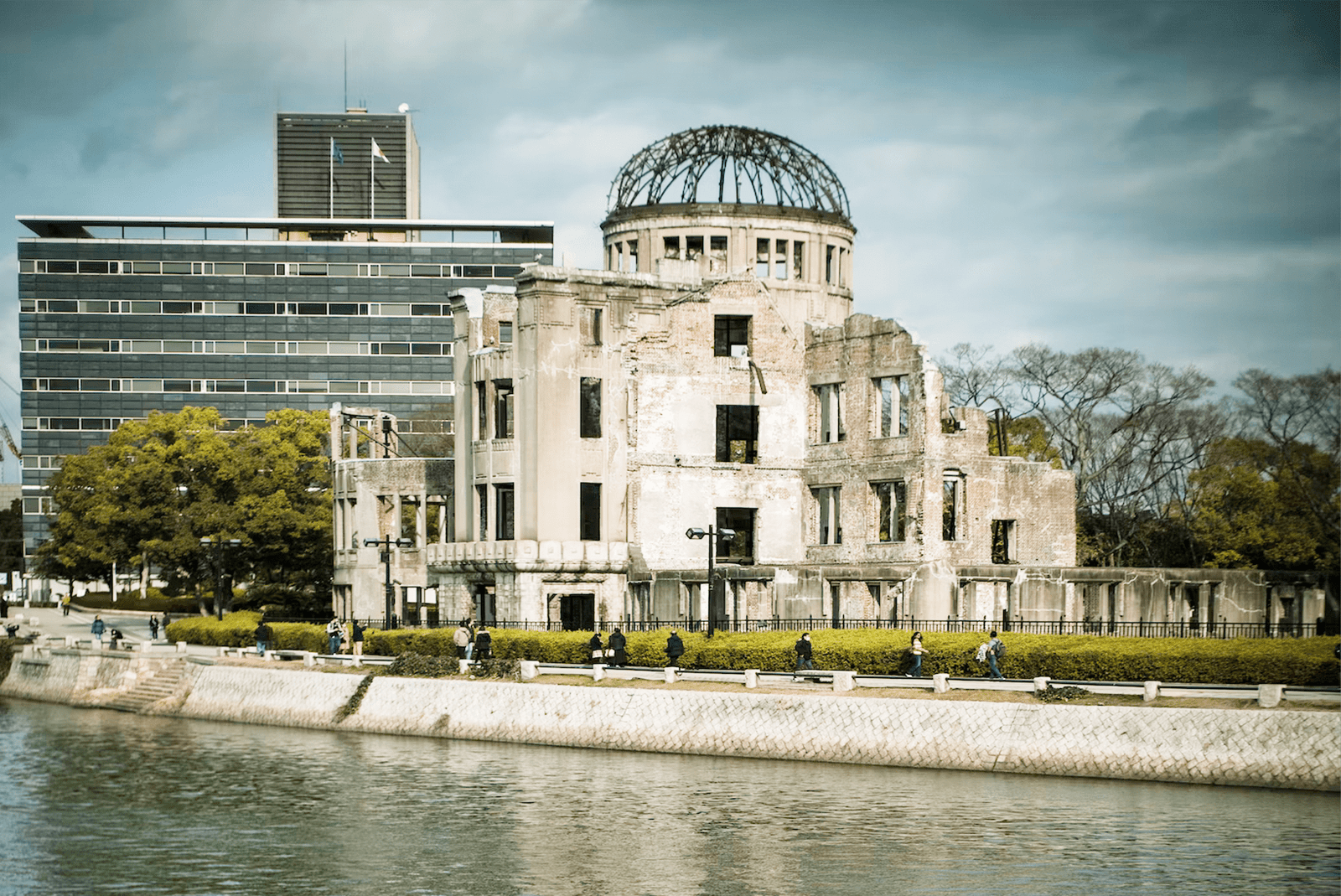
Peace Memorial Park occupies the area that was once ground zero for the atomic bomb that devastated Hiroshima on August 6, 1945. The site of the park is significant not only historically but also as a potent representation of change, recovery and the resolute human spirit.
The skeletal remains of the Hiroshima Prefectural Industrial Promotion Hall conserved to represent the city’s dedication to peace, are situated at the center of the park and are known as the Genbaku Dome. This UNESCO World Heritage Site is a sobering reminder of the devastation that nuclear weapons can cause.
A monument known as the Children’s Peace Monument honors Sadako Sasaki, a young child who died from illnesses brought on by radiation. The monument promotes folding paper cranes, which stand for the aspiration of a peaceful future and the desire for a world free of nuclear weapons.
The Peace Flame and the Genbaku Dome are framed by the arch-shaped Memorial Cenotaph. Its arched shape connects the past, present and future by symbolizing a haven for the victims’ souls and bearing an inscription pledging perpetual peace.
The names and pictures of the atomic bombing victims are displayed in the Peace Memorial Hall, which acts as a place of remembering. The cenotaph is reflected in the arch-shaped design of the Hall, which unifies the two buildings visually.
6. Okinawa Tropical Paradise
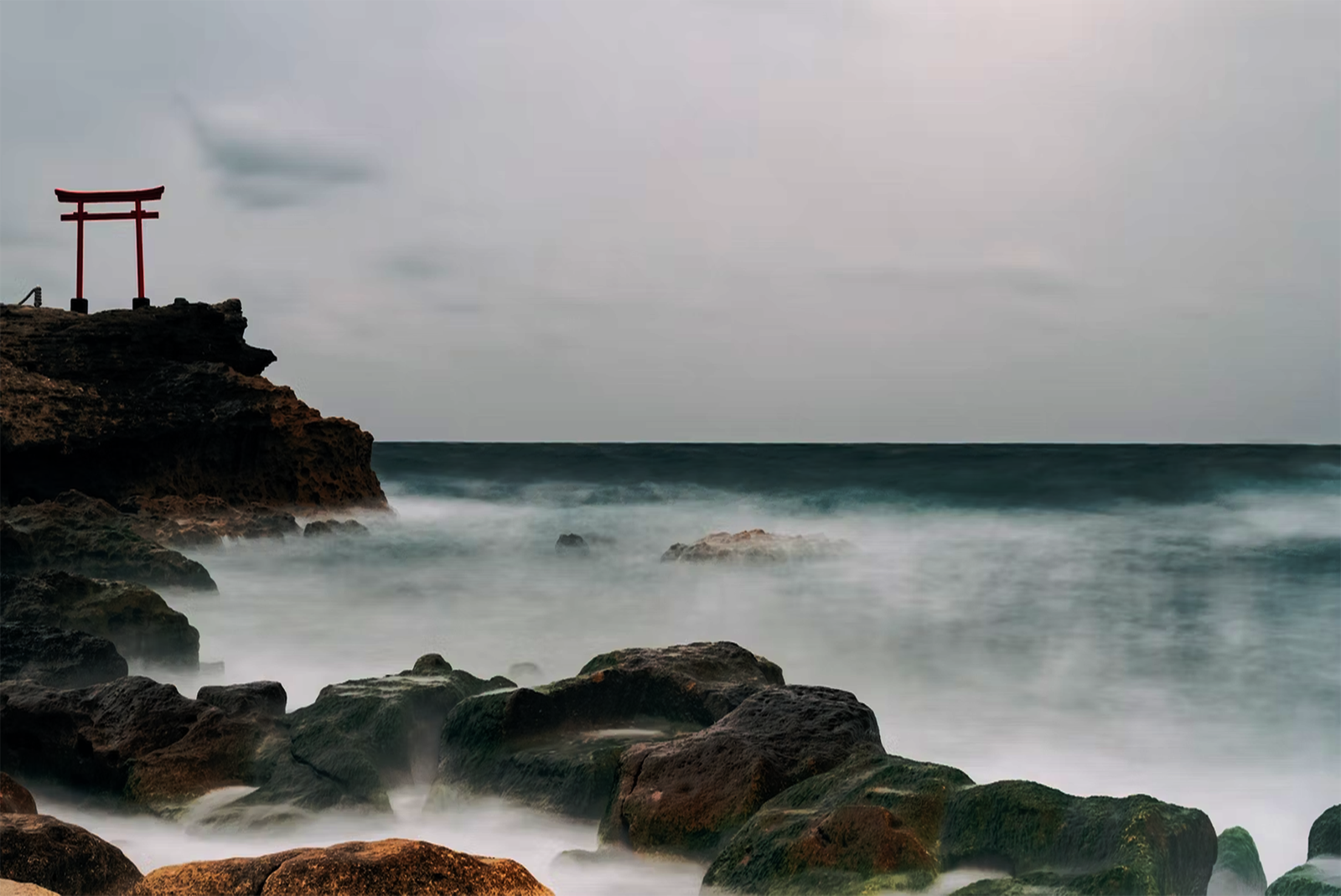
Okinawa boasts some of Japan’s most stunning beaches. Explore the unspoiled beauty of Katsuren Peninsula’s Hidden Beach or relaxing on the peninsula’s soft sands. Okinawa provides a variety of beach getaways, whether you’re looking for the bustling energy of Okuma Beach or the quiet allure of Ikei Beach.
Dive into the fascinating underwater world of Okinawa, where vibrant coral reefs abound. The Kerama Islands are a national park that offer a rainbow of color below the waves. Explore the deep sea through snorkeling or diving, take in the colorful marine life and learn why Okinawa is a haven for scuba divers.
At the UNESCO World Heritage Site, Shurijo Castle discover the rich history of Okinawa. This restored castle provides an enthralling look into the island’s royal past. It was formerly the seat of the Ryukyu Kingdom. Take in the elaborate architecture, verdant gardens and expansive vistas of the surroundings.
Okinawa’s culture is deeply rooted in the traditions of the Ryukyu Kingdom. We’ll see the vibrant patterns of Bingata dyeing come to life on fabric or take in a performance of Eisa, a dynamic Okinawan dance. Enjoy a performance of sanshin music, which features the melancholic tunes of Okinawa’s native three-stringed instrument.
At Cape Manzamo, a beautiful coastal vista renowned for its stunning rock formation, take in the artistry of nature. Through its sea-sculpted “Elephant’s Nose” rock, visitors can enjoy breath-taking views of the East China Sea. An especially beautiful sunset at Cape Manzamo paints the sky in shades of pink and orange.
7. Taketomi Island
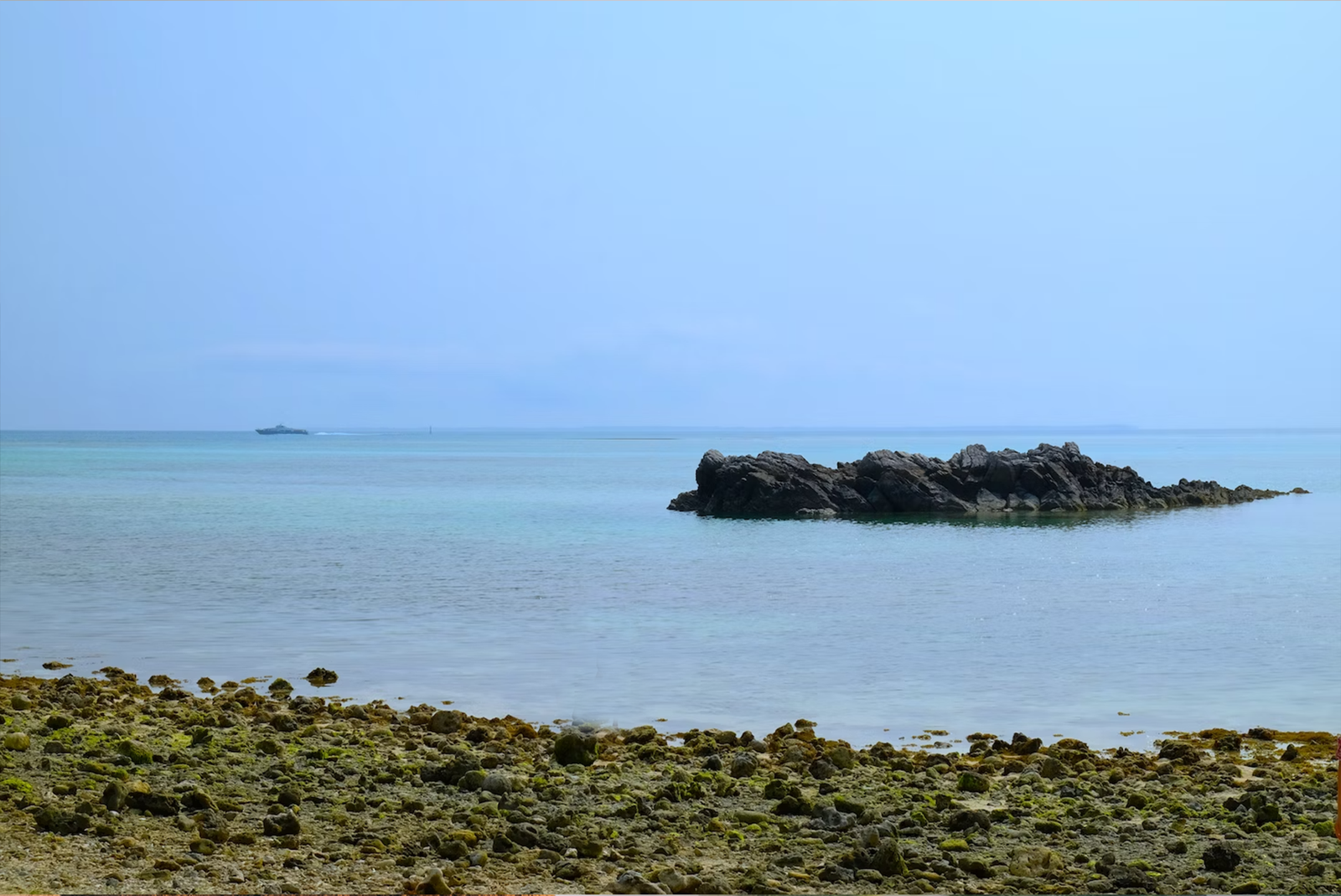
Arriving at Taketomi’s shores after crossing the ferry will make you feel as though you’ve stepped into a living postcard from the past. The quaint village on the island called “Kohama,” has traditional Ryukyuan-style homes with characteristic red-tiled roofs that evoke a magical bygone era.
Taketomi’s architectural legacy is evidence of the island’s dedication to maintaining its cultural legacy. Wander through the village’s winding lanes, which are surrounded by walls made of limestone. You will come across residences with unusual “kame-jima” roofs, which are fashioned to resemble the typical Okinawan tortoise shell.
Consider a ride on the water buffalo cart to experience the laid-back pace of island life. The cart, pulled by these gentle giants, meanders through the streets of the village, giving you time to take in the peaceful environment and your guide’s stories about Taketomi’s fascinating past.
Enjoy the tastes of Taketomi by going to a nearby “Uminchu” restaurant. Savor the fresh caught seafood, Ishigaki beef and traditional Okinawan dishes that showcase the culinary legacy of the island.
The Taketomi Folk Village also known as “Nagaya,” is an outdoor museum that displays traditional Okinawan homes and ways of life. Explore these remarkably preserved buildings to learn about the history, farming methods and tight-knit community spirit of the island.
8. Hoshinoya Taketomi Island

Hoshinoya Taketomi Island enthralls with its graceful architecture from the moment you arrive. Expansive verandas, wooden latticework and traditional red-tiled roofs from Okinawa seamlessly combine luxury and Ryukyuan heritage. The resort’s dedication to maintaining the island’s cultural identity is reflected in the design.
The villas on Hoshinoya Taketomi Island are its main attraction; they are private retreats surrounded by lush gardens. Every villa is built with great care and attention to detail, providing a private haven where modern luxuries combine smoothly with the peace of the surrounding environment.
Being absorbed in Okinawan culture is offered by the resort, which offers more than just a place to stay. Take part in traditional crafts, see local dance forms and listen to live Ryukyuan music performances. In order to introduce visitors to the rich cultural legacy of the Ryukyu Islands, Hoshinoya Taketomi Island aims to serve as a cultural bridge.
Hoshinoya Taketomi Island’s cuisine is a celebration of regional flavors. Savor delectable dishes made with the freshest ingredients from the fields and seas nearby. Dining at the resort is guaranteed to be special because of its dedication to showcasing Okinawa’s rich culinary heritage.
A private garden dinner will elevate your dining experience. Amidst the aroma of exotic blossoms, savor a thoughtfully prepared meal alfresco. This enchanting moment captures the spirit of luxury at Hoshinoya Taketomi Island.
Take leisurely bicycle rides or guided nature walks to discover the island’s natural beauty. The resort welcomes guests who want to experience the leisurely pace of island life while exploring Taketomi’s hidden treasures, which range from secluded beaches to greenery.
Hoshinoya Taketomi Island is unique because of its dedication to providing individualized hospitality. Throughout the stay, the friendly staff makes sure that each visitor feels cared for and welcomed, fostering an atmosphere of genuine hospitality and warmth.
9. Mount Fuji
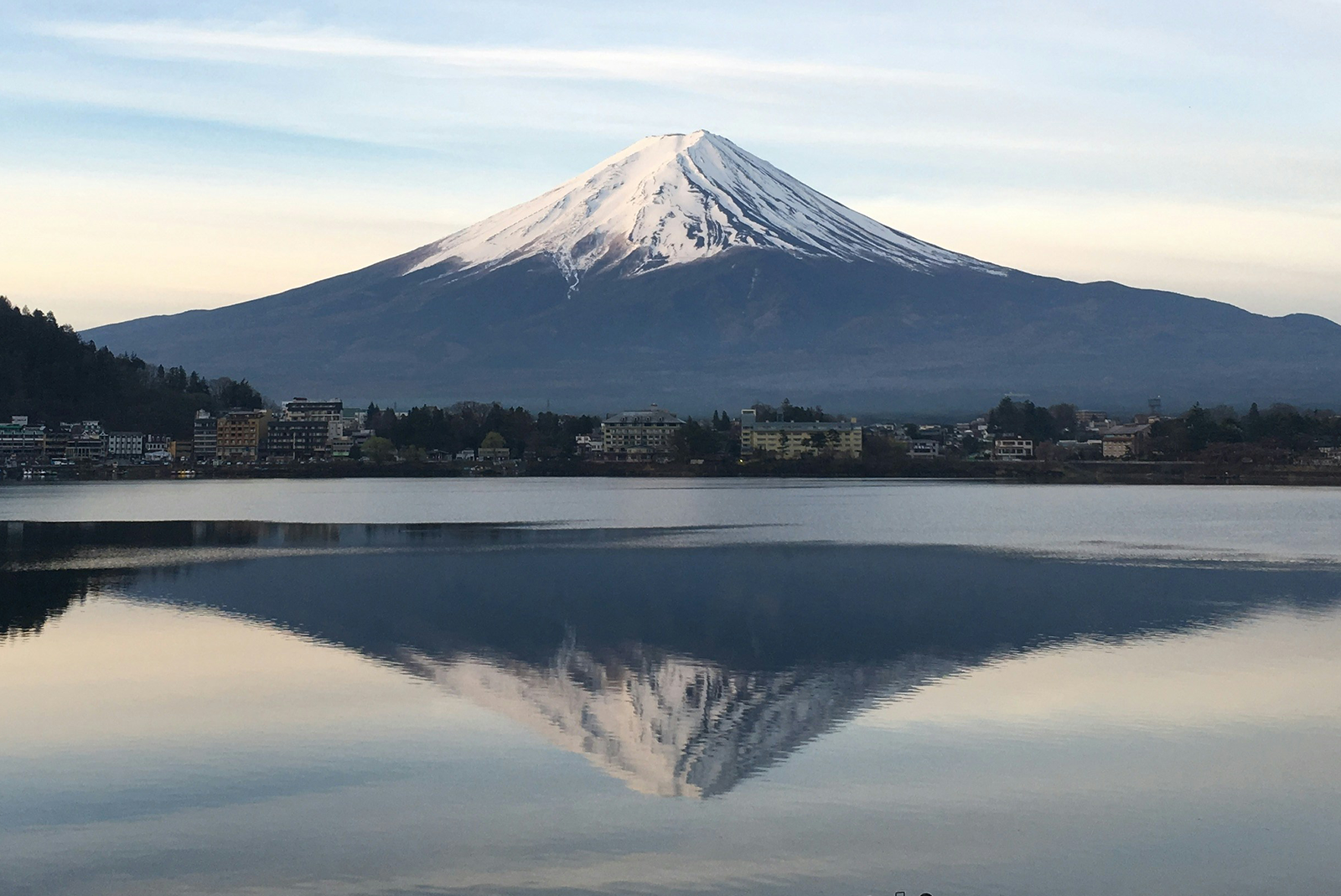
Mount Fuji or “Fuji-san” as it’s affectionately called holds a special place in the hearts of the Japanese people. This stratovolcano, which is recognized as a UNESCO World Heritage Site is more than just a mountain; it is a symbol of Japan’s determination, strength and eternal spirit.
Observe the amazing view of Mount Fuji’s perfectly symmetrical cone. The mountain’s graceful and simple silhouette against the sky attracts whether you are standing at its base or watching it from a distance. It makes sense that it has motivated poets, painters and travelers for centuries.
Japan’s native religion, Shintoism, regards Mount Fuji as a sacred site. Since pilgrims have long ascended the mountain as part of religious rites, the mountain’s already profound presence has taken on a spiritual dimension.
Climbing Mount Fuji is a different kind of pilgrimage for adventure seekers. Both experienced hikers and first-time climbers are drawn to the area during the climbing season, which runs from July to early September. The expansive views of the surrounding landscapes open up as you ascend, giving you a sense of achievement and a closer connection to the natural world.
There is peace and quiet to be found in the Five Lakes area at the foot of Mount Fuji. In addition to providing breathtaking views of the mountain, Kawaguchi, Yamanaka, Saiko, Shoji and Motosu also provide lakeside walks, boat rides and quiet times for reflection.
Mount Fuji anchors the expansive Fuji-Hakone-Izu National Park where hot springs, lush forests and pristine lakes coexist in harmony You can observe the various ecosystems that flourish in the shadow of the famous mountain by exploring this national park.
10. Imperial Tokyo

The magnificent Imperial Palace, the Emperor of Japan’s primary residence is located in the center of Imperial Tokyo. Attached by stone walls and grand gardens, the palace arises a sense of grandeur, providing an insight into the nation’s abundant imperial past.
Through its double-arched design, the charming Nijubashi Bridge transports one to an earlier time of historical theater. This famous bridge represents the refined elegance that defines Imperial Tokyo and is more than just a path.
The Imperial Palace’s outer garden, Kokyo Gaien is a large area perfect for picnics and leisurely strolls. You will notice the contrast between the modern buildings and the classic elegance of the imperial grounds as you stroll along the wide boulevards dotted with cherry trees.
The Imperial Palace’s main entrance, the Seimon Ishibashi Bridge is a modestly opulent building. The bridge flanked by massive stone pillars, brings guests into a world where the past and present coexist harmoniously.
Otemachi, Tokyo’s financial district is right next to the Imperial Palace. Here, modern skyscrapers and corporate headquarters rise out of the imperial surrounds. This neighborhood combines Imperial Tokyo’s elegance with entrepreneurial skills.
11. Island Shrine of Itsukushima, Miyajima
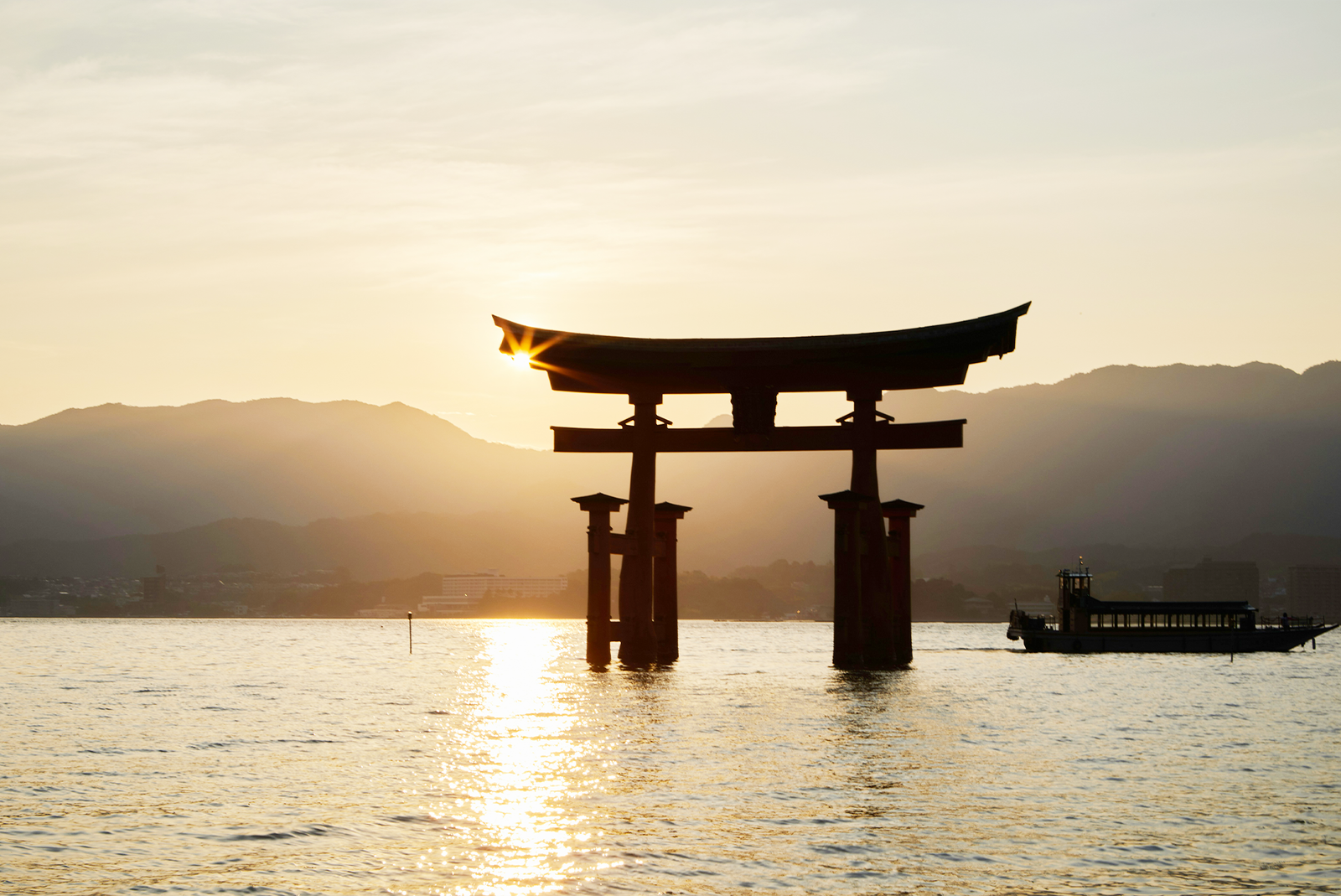
The Itsukushima Shrine represents the Shinto religion architecture with its graceful color buildings perched above the water. The shrine, which honors the three daughters of the sea goddess Susanoo, displays serenity and reverence. Its sacred halls are open for exploration and guests can observe the steady rhythm of daily activities.
You catch your first glimpse of the famous torii gate as your ferry draws closer to Miyajima. The red building rises majestically out of the water and at high tide seems to float giving the amazing illusion that it is a portal to another world. This is the Itsukushima Shrine’s emblem, the Floating Torii Gate, a lighthouse of spiritual significance.
Following to the shrine is Momijidani Park, a colorful green space. The calm island is set against a stunning backdrop of red and gold maple trees in the fall. Walking in the park is a sensory experience and you can explore the area to the sound of rustling leaves.
A group of friendly, freely roaming deer known as gods’ messengers lives in Miyajima. As you meander around the island, come across these gentle creatures and maybe have a moment of communion with these holy partners.
Climb the stone steps to the mountainside Daisho-in Temple. This revered location boasts a plethora of Buddhist statues and provides sweeping views of the island and beyond. Pause for a moment and feel the spiritual energy in the air.
12. Osaka Castle
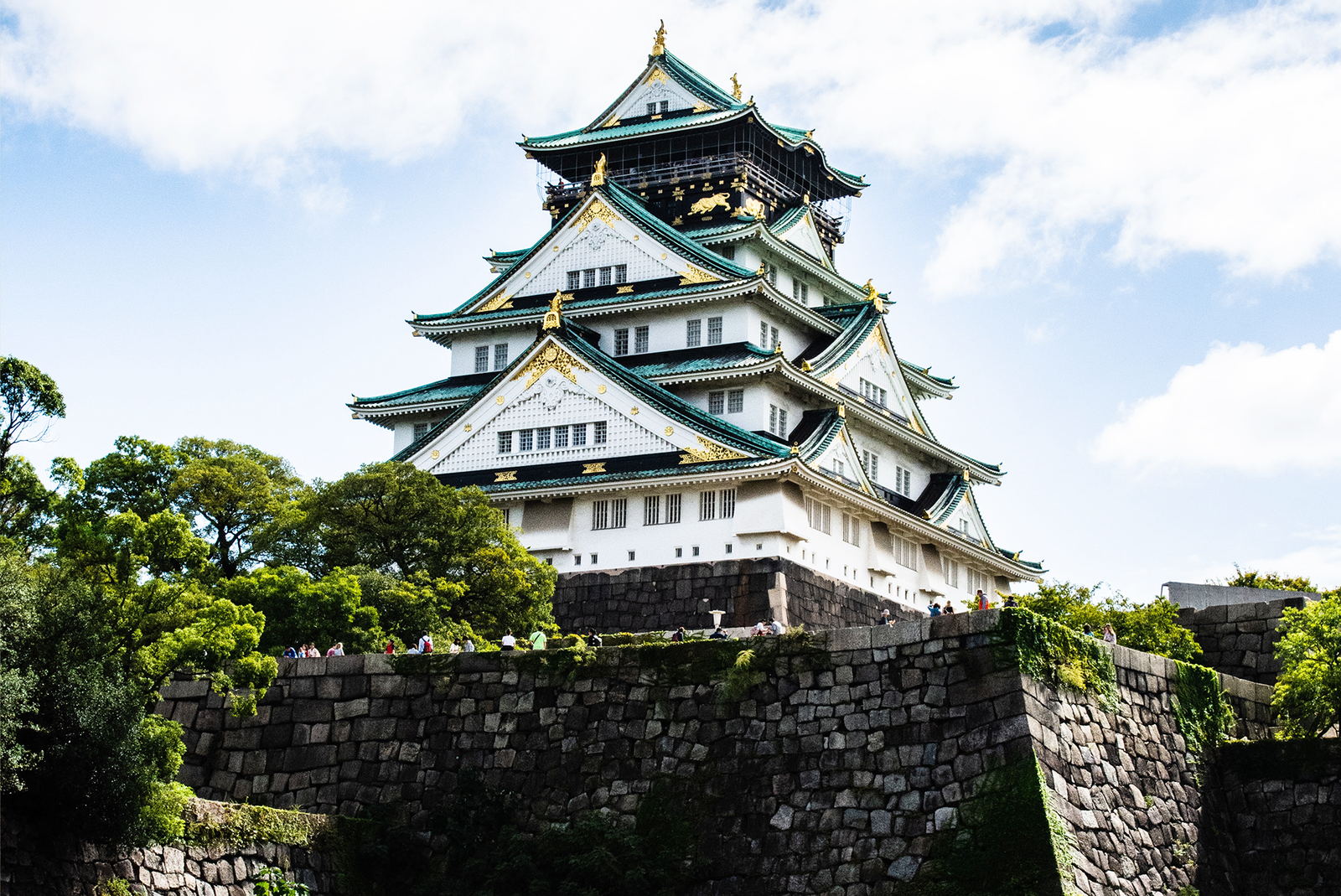
Osaka Castle’s storied past dates back to the 16th century when Toyotomi Hideyoshi, a legendary samurai and statesman, envisioned a fortress that would mirror his power. The castle survived through the ages seeing through wars and changes in politics before emerging as a defender of the history of the city.
The castle’s majestic roofs and gilded decoration demonstrate its architectural magnificence, particularly in its towering main keep. Combining Western and traditional Japanese design elements results in a visually stunning spectacle that captures the spirit of the Momoyama period and transcends time.
Osaka Castle’s grounds transform into a pink paradise during cherry blossom season. Delicate pink and white shades influence the castle as hanami (flower viewing) enthusiasts find refuge in the extensive Nishinomaru Garden and its surrounding moats.
Explore Osaka’s past at the Osaka Castle Museum, which is located inside the keep of the castle. Displays highlight the life of Toyotomi Hideyoshi, the Osaka Siege and the development of the local culture. Ancient tales are given new life by interactive exhibits and artifacts.
Beyond the stone walls lies Nishinomaru Garden, a haven of serenity. Explore routes lined with lush vegetation, traverse stone bridges and discover the ideal location for reflection surrounded by the embrace of nature. A scene out of a postcard is the castle view set against a backdrop of sharp autumn leaves or cherry blossoms.
13. Fukuoka Castle Ruins - An Archeological Treasure

Emperor Kuroda Nagamasa’s attempts to fortify the area at the beginning of the 17th century are when Fukuoka Castle first emerged. During Japan’s Edo period, the castle, encircled by stone walls and water moats, became a symbol of power and strategic importance.
The layout of Fukuoka Castle demonstrates the strategic genius of its design. The castle’s grounds, which include gates, turrets and large courtyards, were designed to maximize defense. The ruins of this architectural marvel still take visitors on a trip through time.
Maizuru Park’s verdant embrace embraces the remnants of Fukuoka Castle. The beautiful backdrop created by cherry blossoms in the spring, vibrant foliage in the fall and tranquil greenery all year round makes it a haven for nature lovers and history buffs equally.
The outer moat of the castle, Ohori has stone walls that serve as both artistic and defensive features. The differently shaped stones were skillfully arranged to form an eye-catching pattern that highlights the builders’ artistic sensibilities.
Fukuoka Castle was a major influence on Kyushu’s history. Its advantageous location made trade, cross-cultural interaction and power in politics possible, all of which had a lasting impact on the growth of the area.
14. Fushimi Inari-taisha Shrine, Kyoto
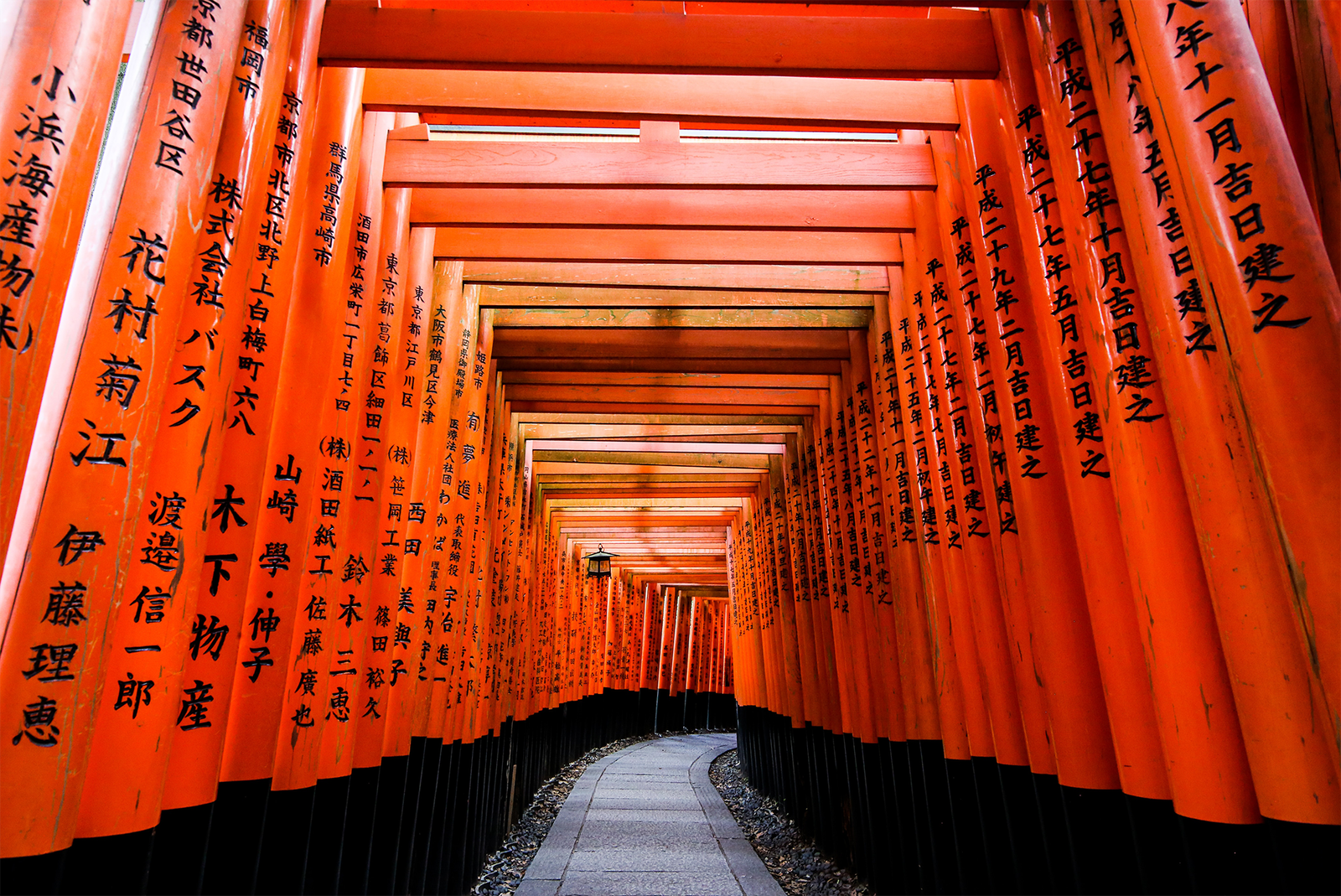
Determined to Inari, the Shinto god of rice and prosperity, Fushimi Inari-taisha is more than just a shrine; it’s a spiritual sanctuary that invites guests to walk its hallowed path and ask for blessings for success and good fortune.
Situated among the lush hills of Fushimi is the famous Senbon Torii also known as “thousands of torii gates.” Every gate embellished with black characters and painted in a vermilion hue, is a symbol of the faithfulness of those who worship there and acts as a guide for travelers.
Foxes or “kitsune,” are regarded as Inari’s messengers in Japanese folklore. You might come upon fox statues along the torii-lined path. These statues represent the rice granary and emphasize the link between Inari and agricultural prosperity by each having a key in its mouth.
The inner sanctum and the main shrine are located in the center of the complex. Take a moment to offer prayers, observe customary rituals and become fully enveloped in the physically felt spiritual energy that affects the area.
The shrine holds a number of festivals all year long one of which is the colorful Inari Matsuri. The sounds of traditional music and the vibrant colors of festive clothing fill the air during these events, fostering a joyful and culturally celebratory atmosphere.
15. Koyasan Okunoin

Explore Okunoin through the imposing torii gate and you’ll find yourself in a place where time appears to stand still. The pathway leads you toward the center of the holy complex and is bordered by tall cedar trees.
As evening approaches the soft flicker of thousands of lamps illuminates Okunoin’s stone walkways. The cemetery is transformed into a serene pilgrimage where every step is a meditative journey by the soft glow’s othearworldly ambiance.
The cremation site of Shingon Buddhist founder Kobo Daishi located in the center of Okunoin, is surrounded by a quiet reverence as pilgrims and visitors pay respect to the spiritual master, who is thought to be in an eternal state of meditation.
The line separating the holy and the profane is represented by the Gobyobashi Bridge. Passing under this bridge invites consideration of life’s transience as it represents entering the domain of the dead.
Small Jizo statues can be found all over Okunoin, acting as silent watchmen and guarding the spirits of departed children. These statues adorned with knit scarves, hats and bibs left by bereaved parents, evoke a heartfelt sense of compassion.
16. Okinawa Churaumi Aquarium

Explore the captivating Kuroshio Tank, one of the world’s biggest aquariums. Here, a glimpse of the vibrant marine ecosystem of the Kuroshio Current is provided by the gentle dance of graceful manta rays, majestic whale sharks and sleek sharks against the backdrop of crystal-clear waters.
A living canvas, the Coral Sea exhibit presents the rainbow of hues that characterize coral reefs. Bright coral formations that are home to a wide variety of fish species produce a striking sight that emphasizes how crucial it is to protect these delicate ecosystems.
The Dolphin Lagoon is an exhibit of dolphins’ acrobatic skill, a celebration of intelligence and agility. In addition to being entertaining, educational presentations emphasize the value of marine conservation and the necessity of safeguarding these extremely intelligent animals.
Enter the captivating Underwater Tunnel and let the underwater world explode all around and above you. Take in the immersive experience of walking beneath gracefully gliding sharks, schools of tropical fish and the curious sea turtles, which will bring you closer to the wonders of the ocean.
Through supervised interactions with marine life, visitors can engage in a tactile experience at the Touch Pool. To establish a stronger bond with the underwater world, feel the soft touch of starfish and the soft glint of rays.
17. Matsumoto Castle, Nagano
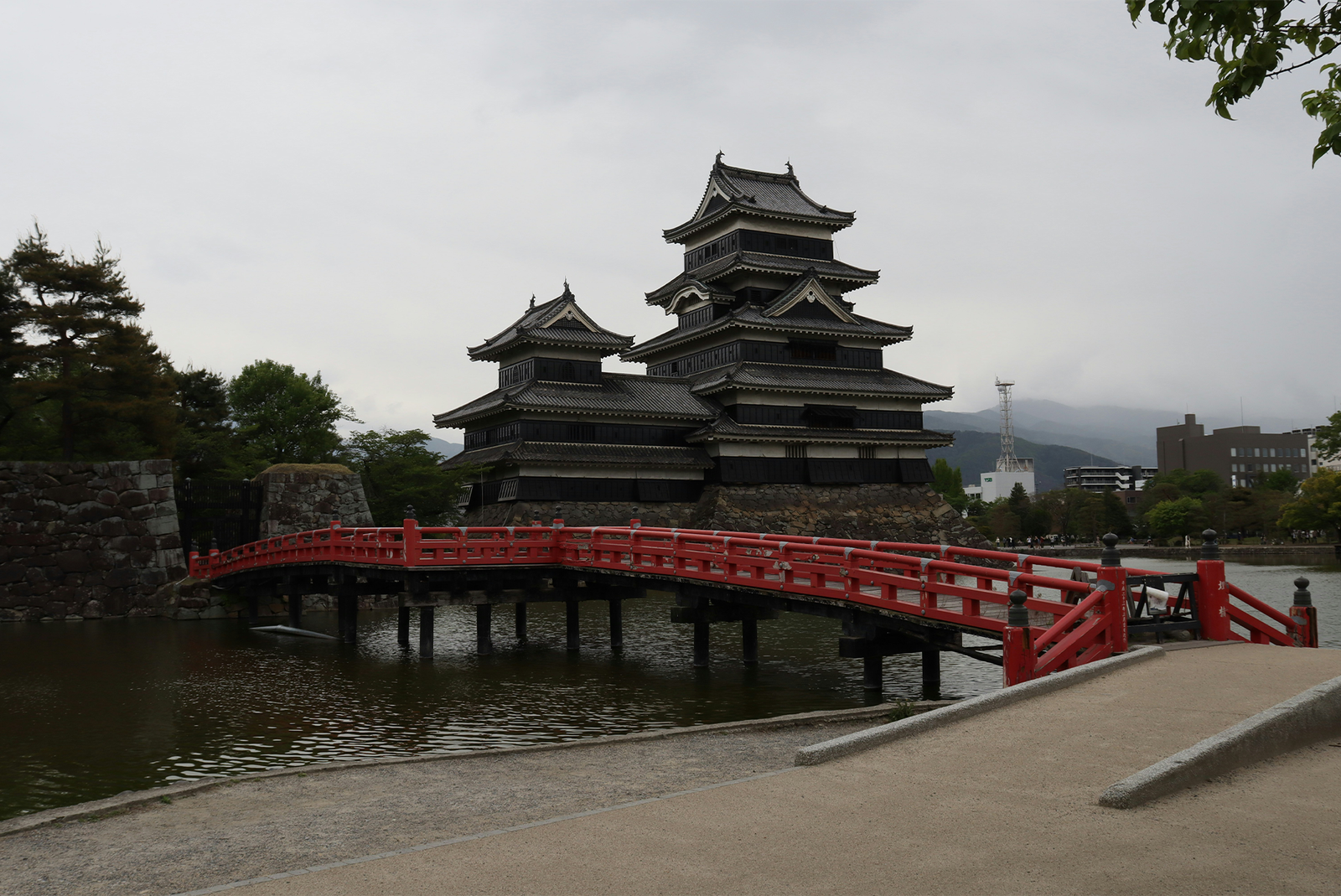
Matsumoto Castle, also called the “Karasujo” or “Crow Castle,” gets its name from its eye-catching black exterior. The castle’s outline resembles a black crow in flight against the picturesque backdrop of the Japanese Alps, signifying both power and grace.
The striking Japanese castle architecture known as “hirajiro,” which is defined by its flatland design, is best exemplified by Matsumoto Castle. The main keep’s six stories feature dramatic staircases, well-placed gun ports and exquisite wooden interiors that highlight the Edo period’s architectural genius.
There are several defensive elements aimed at discouraging intruders as you climb the steep wooden staircases. Every feature of the castle, from secret openings for archers to meandering channels that confused assailants, demonstrates the strategic intelligence of its architects.
Matsumoto Castle’s “Tatsumi-yagura,” or Moon-Viewing Turret, is a beautiful addition. Its name highlights the samurai’s dedication to both martial and artistic endeavors by implying a place of refinement and cultural appreciation.
Matsumoto Castle is surrounded by the verdant Matsumoto Castle Park making it more than just a stand-alone building. The park’s natural beauty and the stoic presence of the castle combine to create an environment perfect for reflection and leisurely strolls.
Matsumoto Castle in Nagano is more than a historic site; it’s a living embodiment of Japan’s rich cultural heritage. You will be taken back in time to a period when warriors roamed the land and castles served as symbols of strength and refinement as you explore its hallways, scale its towers and take in the incredible views. Come explore the historical corridors of Matsumoto Castle, where the amazing mountain backdrop points out the echoes of the past.
18. Arashiyama Monkey Park, Kyoto

There’s a scenic climb before arriving at Arashiyama Monkey Park. The anticipation grows as you ascend through the verdant forest and the enveloping sounds of nature become your constant companion.
A sanctuary where Japanese macaques, sometimes referred to as snow monkeys, roam freely awaits at the summit. Seeing these clever and jovial animals in their natural environment provides a unique window into their social structures and day-to-day activities.
Arashiyama Monkey Park promotes civil conversation. To get up close and personal with the monkeys, guests can enter a designated area. Providing them with the food guarantees a pleasant encounter while maintaining a secure and peaceful atmosphere.
Arashiyama Monkey Park is a harmonious fusion of nature, wildlife and cultural appreciation—it’s more than just a place to visit. You’ll feel a special connection to Kyoto’s natural treasures as you take in the stunning views, laugh at the monkeys’ antics and relax in the peaceful surroundings. Explore the wonders of Arashiyama Monkey Park, where the allure of the wild collides with the splendor of Japanese nature.







